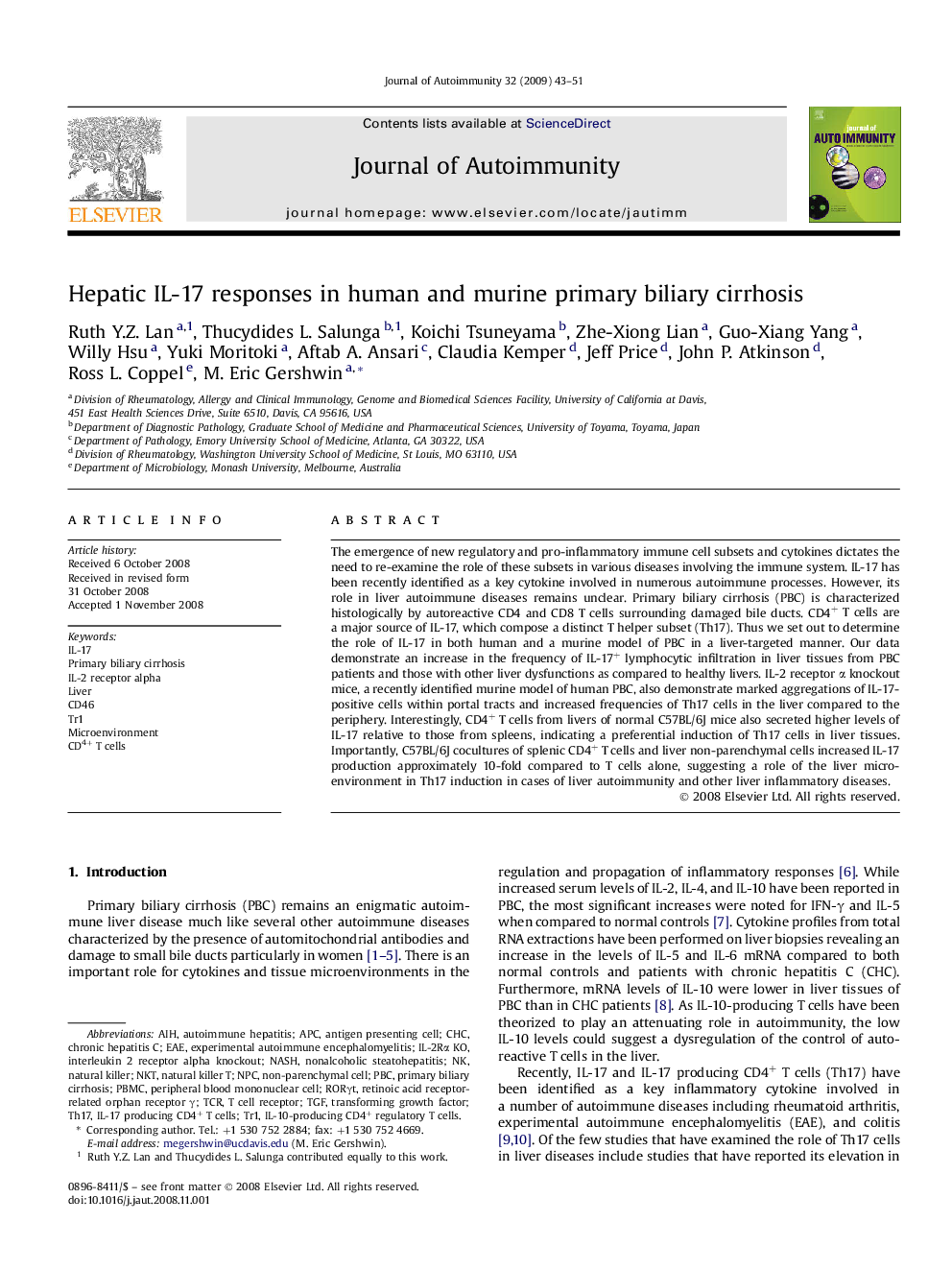| Article ID | Journal | Published Year | Pages | File Type |
|---|---|---|---|---|
| 3368289 | Journal of Autoimmunity | 2009 | 9 Pages |
The emergence of new regulatory and pro-inflammatory immune cell subsets and cytokines dictates the need to re-examine the role of these subsets in various diseases involving the immune system. IL-17 has been recently identified as a key cytokine involved in numerous autoimmune processes. However, its role in liver autoimmune diseases remains unclear. Primary biliary cirrhosis (PBC) is characterized histologically by autoreactive CD4 and CD8 T cells surrounding damaged bile ducts. CD4+ T cells are a major source of IL-17, which compose a distinct T helper subset (Th17). Thus we set out to determine the role of IL-17 in both human and a murine model of PBC in a liver-targeted manner. Our data demonstrate an increase in the frequency of IL-17+ lymphocytic infiltration in liver tissues from PBC patients and those with other liver dysfunctions as compared to healthy livers. IL-2 receptor α knockout mice, a recently identified murine model of human PBC, also demonstrate marked aggregations of IL-17-positive cells within portal tracts and increased frequencies of Th17 cells in the liver compared to the periphery. Interestingly, CD4+ T cells from livers of normal C57BL/6J mice also secreted higher levels of IL-17 relative to those from spleens, indicating a preferential induction of Th17 cells in liver tissues. Importantly, C57BL/6J cocultures of splenic CD4+ T cells and liver non-parenchymal cells increased IL-17 production approximately 10-fold compared to T cells alone, suggesting a role of the liver microenvironment in Th17 induction in cases of liver autoimmunity and other liver inflammatory diseases.
